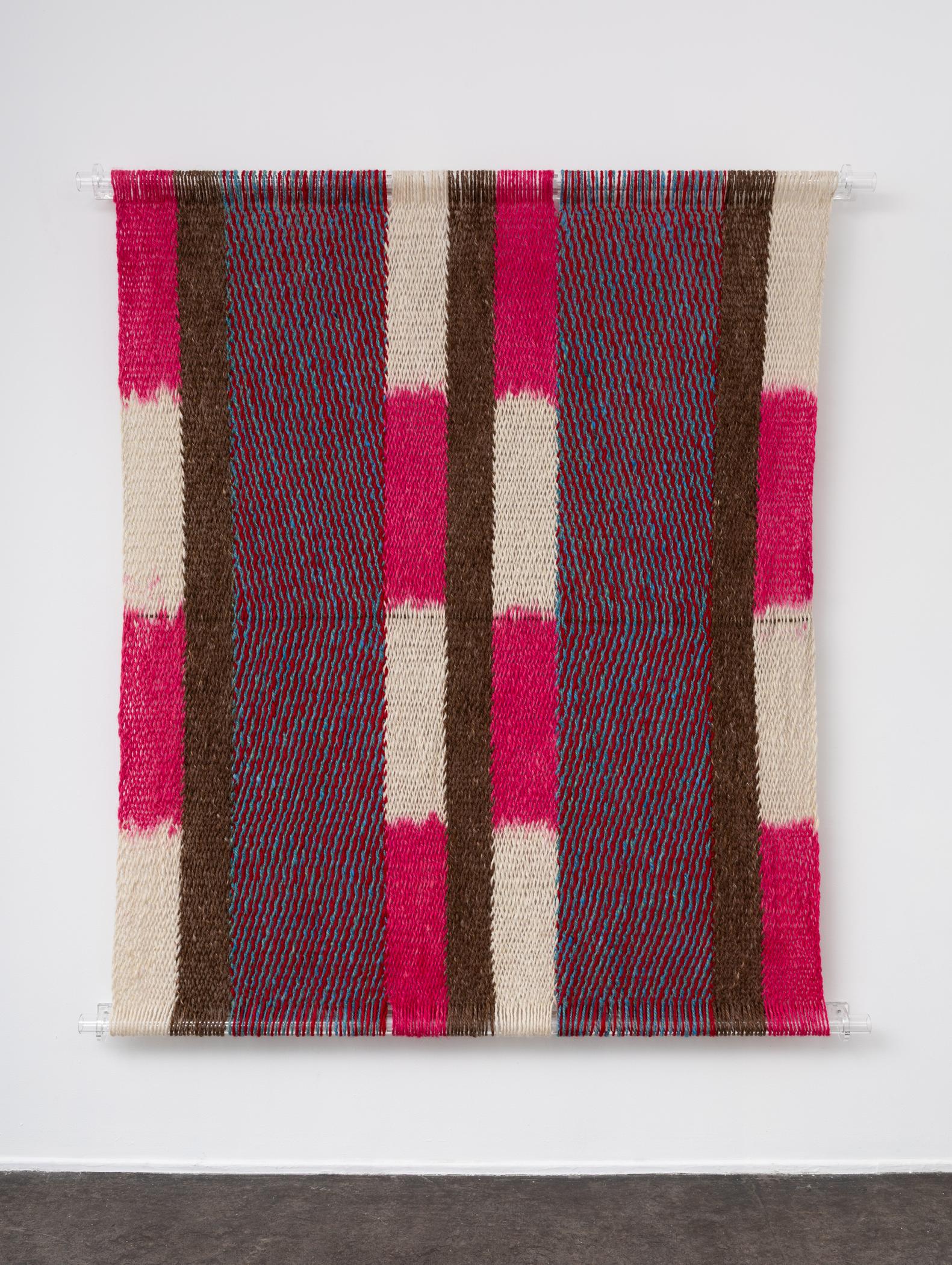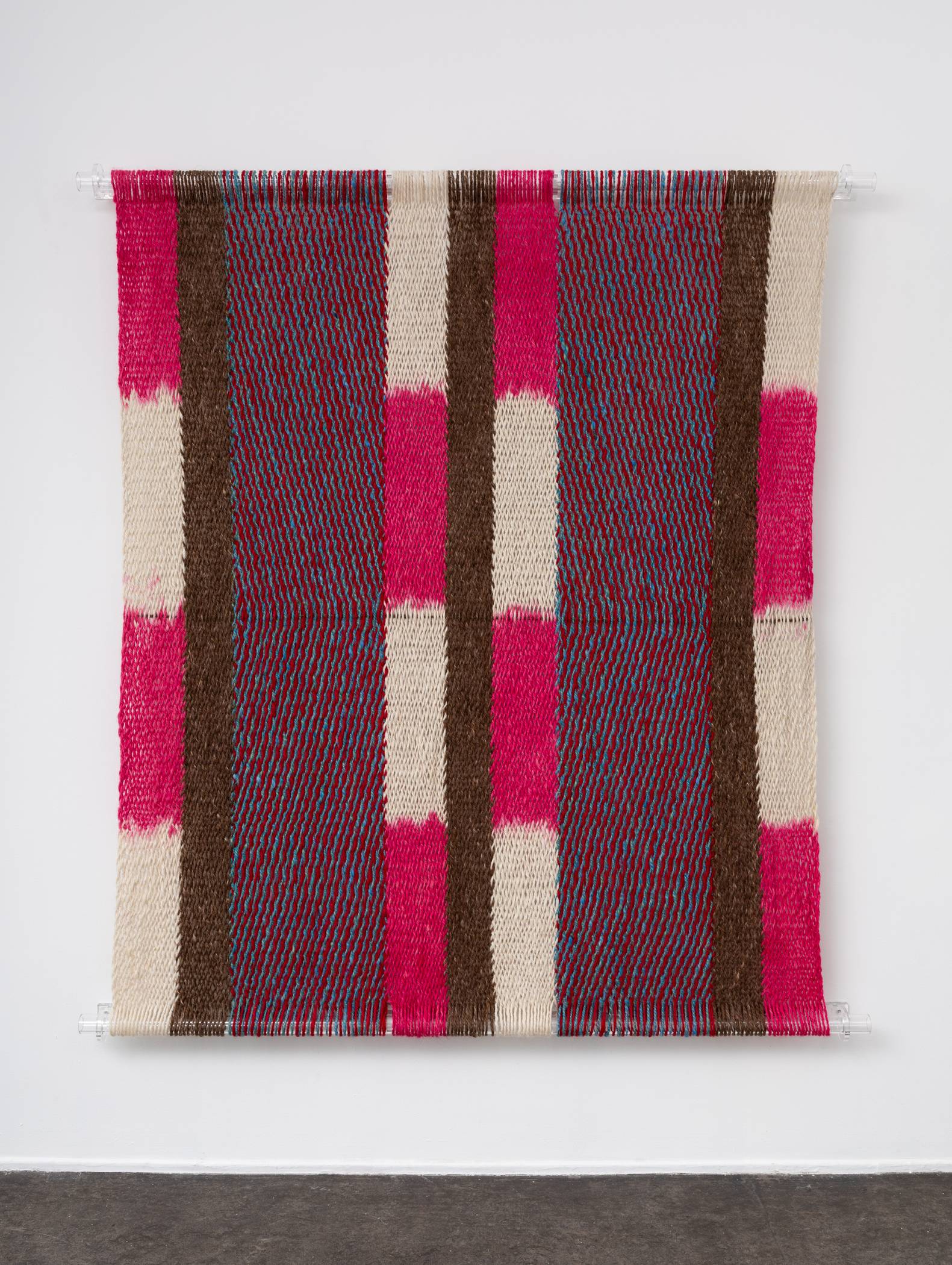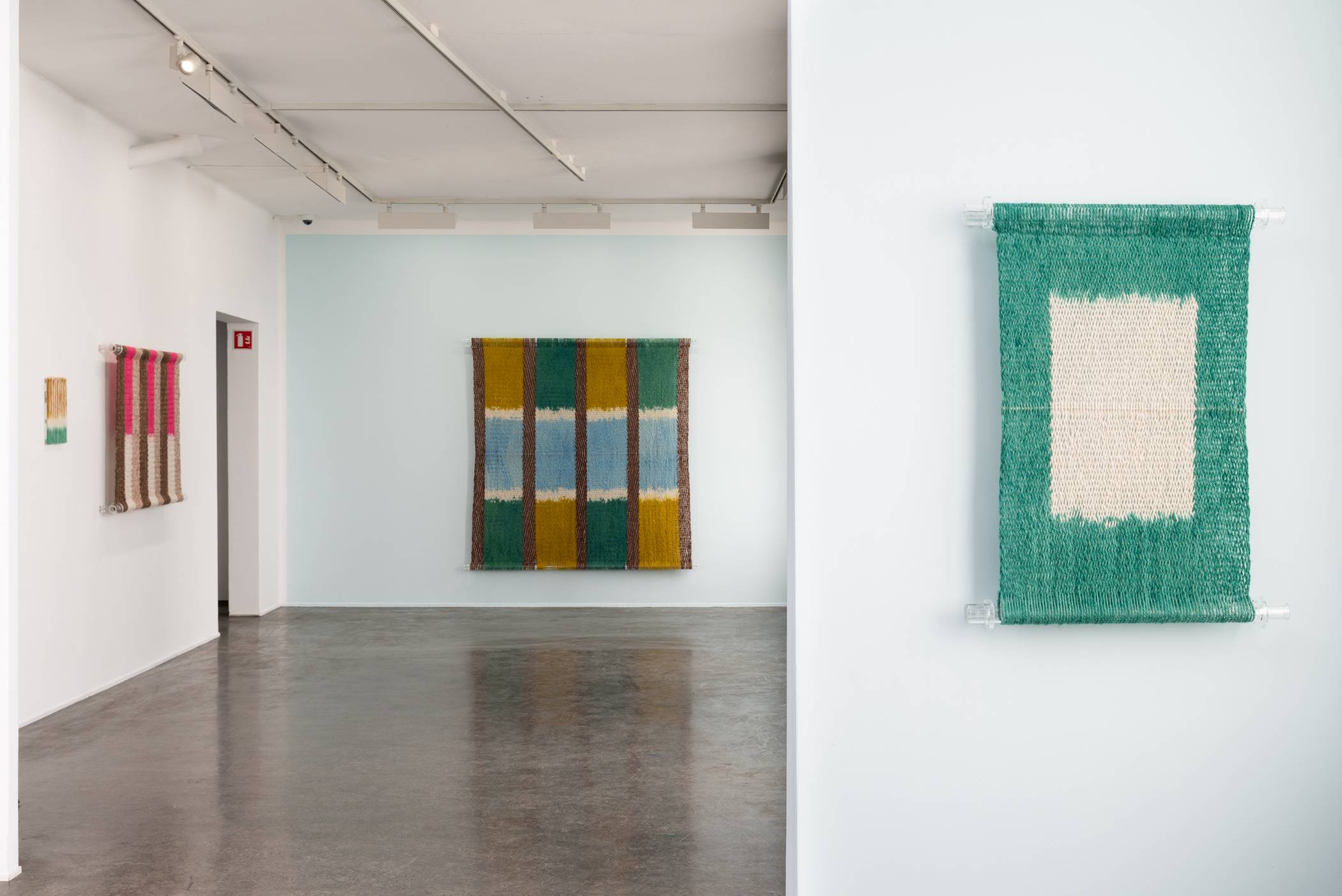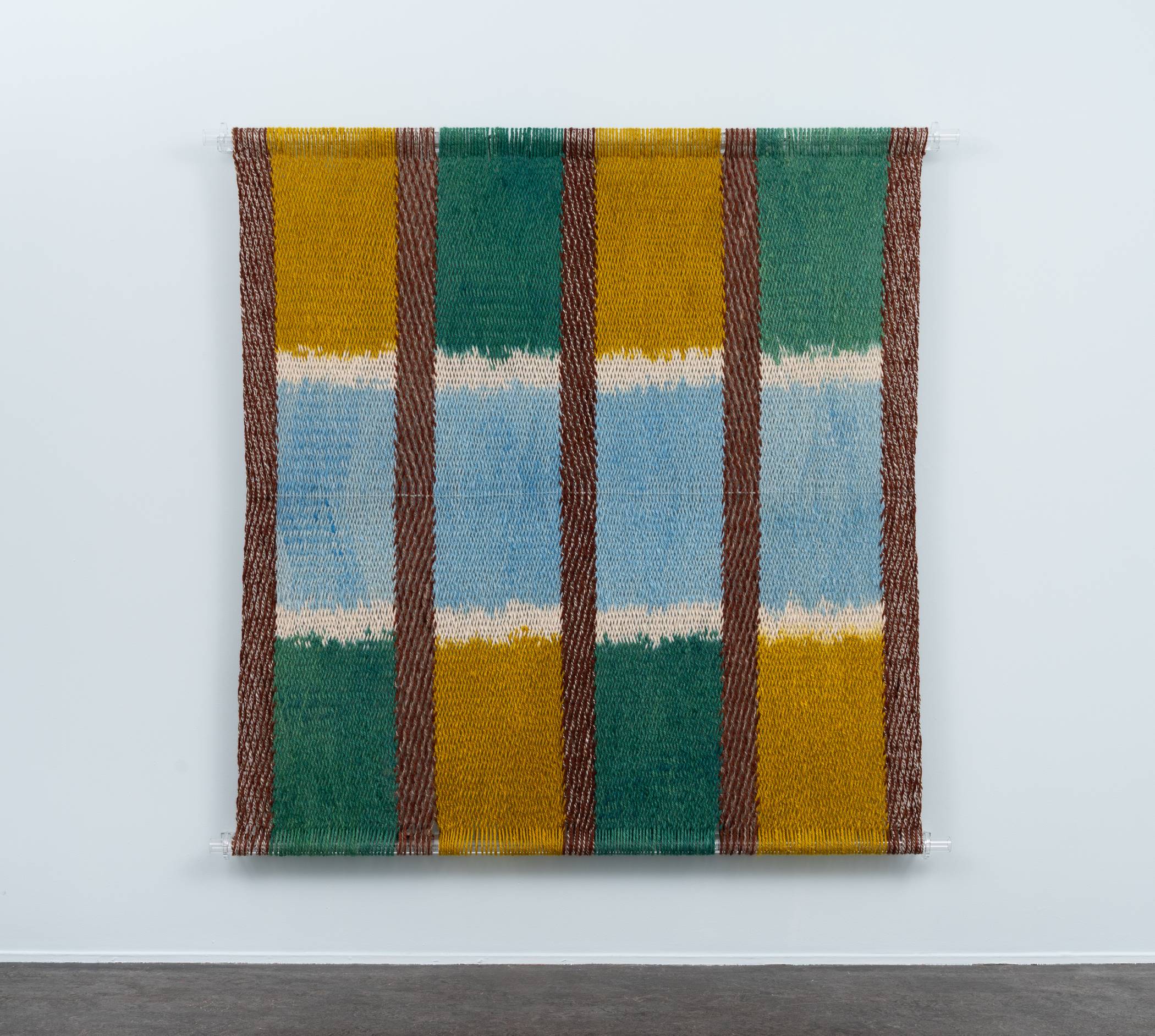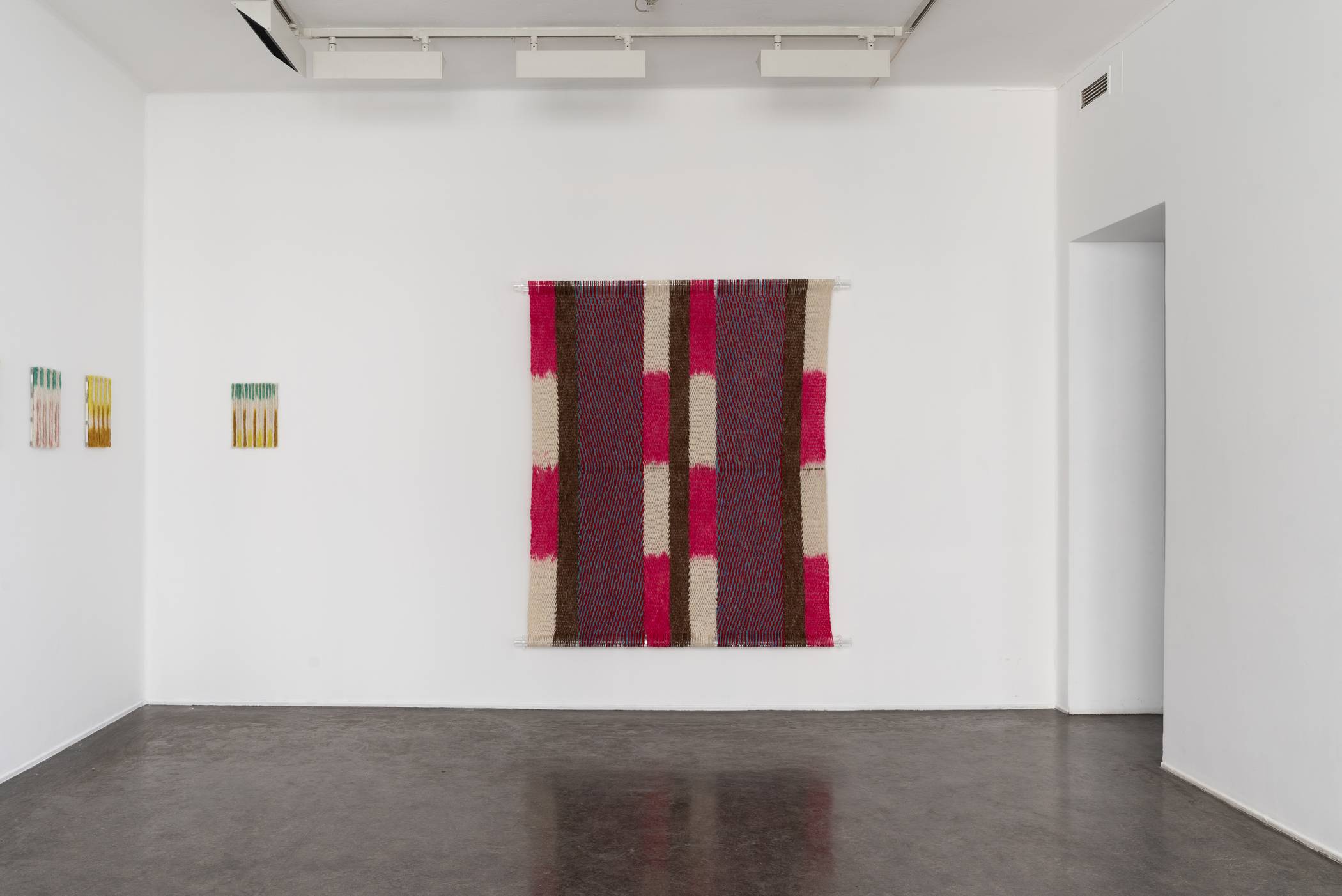Liilian Saksi
Ikat
Exhibition spaces on the 2nd floor
03.04.—18.05.2025
Liilian Saksi’s exhibition, Ikat, refers to a traditional dyeing technique where parts of the yarn are dyed before weaving – either in the weft, the warp, or both – while other sections remain undyed. Together, the undyed and the dyed sections generate patterns in the weave. In the exhibition, ikat is used in combination with sprang, a braiding technique that has been central to Saksi’s artistic practice. Sprang can be traced back to the Bronze Age and has been found in various cultures across the world. In sprang, the weave is not made of the warp and the weft; rather, sprang involves manually braiding warp threads over one another, resulting in continuous diagonal bindings that resemble plain weave. Saksi’s sprang works in wool appear as airy weaves, where the properties of the wool fibres emerge in the textile’s breathable surface. This is the first time Saksi has incorporated ikat into her sprang works.
The exhibition showcases new works in which Saksi allows the yarn to change direction along vertical lines. The dyed sections form muted horizontal lines, marked by the subtle shifts in the weave. The hues create resonances within the works, seeking harmony with traces of dissonance. There is a symmetry with imbalance. Dyed sections with bold hues play against undyed, earth-toned sections. Dyed brown colours generate friction against undyed brown shades. The colour variations within a flock of sheep become visible, making up a palette based on a group of individual animals.
There is a contrast between natural fibres and synthetic materials in the works. The wool is dyed using synthetic pigments, and transparent acrylic cylinders serve as structural elements. When used to stretch the wool, a tension between the materials develops. In the series Tonarter, Saksi has affixed various twisted yarn strips to acrylic boards. The yarn is systematically dipped in dye and forms a repeating pattern. The twisted wool functions as flexible modules that can be moved and rearranged throughout the working process.
In the works, Saksi uses wool from her own flock of sheep in Eidskog, along with her parents’ sheep in Sweden. She spins and dyes the yarn herself as part of her artistic process. Living within this cycle, Saksi remains close to ethical questions regarding the intrinsic value of animals. Her sheep inhabit a kind of utopia – free from breeding or slaughter – while also serving as the foundation of her artistic practice, keeping the smallholding economically sustainable.
Liilian Saksi (b. 1989) holds a BFA and an MFA in medium- and material-based art from the Oslo National Academy of the Arts. She lives and works on a farm in Skotterud. Saksi has held solo exhibitions at SOFT Gallery and KRAFT Bergen, among others. In June, she will showcase her works at Oplandia senter for samtidskunst.
The exhibition project is supported by Norwegian Visual Artists Fund (BKV).
